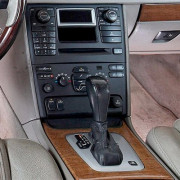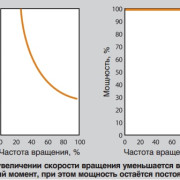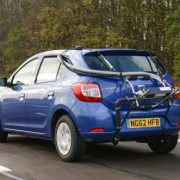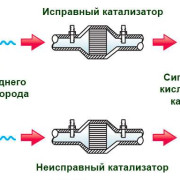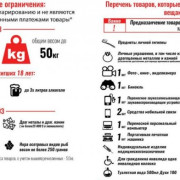The best infotainment systems
Содержание:
- Ford F-150
- Журналистика
- Simple Definition
- Ford Sync 3
- Why Develop For Apple CarPlay And Android Auto?
- Hyundai BlueLink
- Система Infotainment
- Audi MMI
- Infotainment: usability and functionality
- What’s in a Name
- Сноски
- 2/10 Best: Cadillac XT4 Infotainment System
- Ford Sync
- Critical features of car infotainment systems
- Jeep Gladiator
- Why do infotainment systems all have different names?
- Can I add an infotainment system to my car?
- What are your options?
- BMW iDrive
- Коммодификация
- What Is Android Auto?
- What to Consider when Choosing an Infotainment System
- Hyundai
Ford F-150
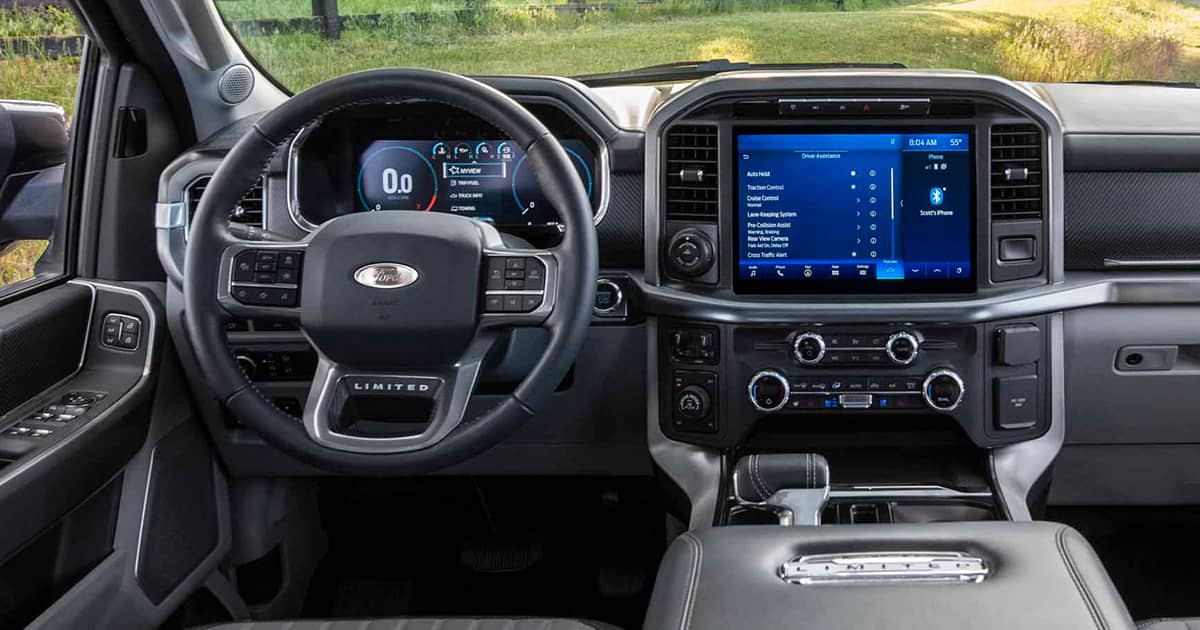
This monster truck has a remarkable infotainment interface in the XL version. Ford F-150 comes with a USB port and voice-activated sync system. The 8-inch touchscreen is included in the XLT upgrade with Bluetooth, Wi-Fi hotspot, Android Auto and Apple CarPlay. More available features are included in the higher trims such as Olufsen stereo system, satellite radio and navigation.
So these were some of the best infotainment systems of 2020. They are highly functional and worth the money. You can get these cars with dynamic entertainment and information centres.
In case you buy a car in Dubai, you can get good deals. It is better to reach out to CarSwitch, which is the best second-hand cars dealer in Dubai.
Журналистика
Некоторые определяют «журналистику» только как освещение «серьезных» тем, журналистские стандарты поддерживаются репортером. Другие считают, что более крупный «новостной бизнес» охватывает все, от профессиональной журналистики до так называемого «новостного бизнеса».мягкие новости «и» информационно-развлекательная система «, а также вспомогательные мероприятия, такие как маркетинг, продажи, финансы и доставка. Тем не менее, разделение двух понятий «серьезные новости» и «мягкие новости» является спорным. Профессиональная журналистика должна уделять больше внимания исследование, проверка фактов и общественный интерес чем его «не журналистские» аналоги. Потому что термин «Новости «является довольно широким, термины» жесткий «и» мягкий «обозначают разницу в соответствующих стандартах для ценность новостей, а также стандартов поведения по отношению к профессиональным идеалам журналистская честность.
Идея тяжелые новости олицетворяет два ортогональный концепции:
Серьезность: Политика, экономика, преступность, войны и бедствия считаются серьезными темами, как и определенные аспекты права, бизнеса, науки и технологий.
Своевременность: Истории, которые освещают текущие события — ход войны, результаты голосования, возникновение пожара, важное заявление, освобождение заключенного, заметный экономический отчет.
Логическая противоположность, мягкие новости иногда уничижительно называют информационно-развлекательная система.Основные характеристики, вызывающие наибольшую критику, включают:
- Наименее серьезные предметы: Искусство и развлечения, спорт, образ жизни, «человеческие интересы» и знаменитости.
- Несвоевременно: Нет никаких ускоряющих событий, запускающих эту историю, кроме любопытства репортера.
Своевременные события происходят по менее серьезным предметам — спортивные матчи, знаменитость злоключения, релизы фильмов, художественные выставки и так далее.
Также могут быть серьезные отчеты, которые не основаны на событиях — освещают важные социальные, экономические, правовые или технологические тенденции — следственный отчеты, которые раскрывают текущие коррупция, загрязнение, или безнравственность — или обсуждение неурегулированных политических вопросов без особых на то причин. Годовщины, праздники, конец года или сезона или конец первых 100 дней работы администрации могут сделать некоторые истории чувствительными ко времени, но предоставляют больше возможностей для размышлений и анализа, чем любые фактические «новости» для сообщения .
Спектр «серьезности» и «важности» четко не определен, и разные медиа-организации идут на разные компромиссы. «Новости, которые вы можете использовать» — распространенная маркетинговая фраза, выделяющая определенный жанр журналистики, — охватывает серую зону
Советы по садоводству и «новости» о хобби явно приходятся на конец развлечения. Предупреждения о надвигающихся стихийных бедствиях или острой бытовой угрозы безопасности (такие как воздушные налеты или террористические атаки) считаются настолько важными, что вещательные СМИ (даже не новостные каналы) обычно прерывают другие программы, чтобы сообщить о них. Медицинский рассказ о новом лечении рака груди или отчет о местных загрязнение грунтовых вод может оказаться посередине. Так могут быть обзоры книг или освещение религии. С другой стороны, люди часто считают, что хобби и развлечения являются стоящей частью своей жизни, и поэтому «важность» на личном уровне скорее субъективный.
Simple Definition
Quite simply, an infotainment system is an in-dash system designed
to both inform and entertain the driver as well as passengers. You’ve probably
noticed the large screens in the center stack, or the area of the dash between
the driver and passenger sides of the vehicle, in newer models.
An infotainment system controls the sound system, which can
include the radio, maybe a CD player, connected audio device, satellite radio,
etc. On upgraded or luxury models it might also contain a navigation system.
In addition, infotainment systems might do everything from notify when regular maintenance is needed to provide a digital copy of the vehicle owner’s manual. In some cars, the infotainment system even controls the heating and cooling systems for the cabin. If your car has a rear entertainment system, the infotainment screen likely manages what’s playing for passengers in the back. All are part of what is a car infotainment system.
With hybrid and electric cars, the infotainment system helps you manage energy storage and the drivetrain. Modern driver assistance warnings, such as blind-spot detection and forward collision warning, often display alerts through the infotainment system, although those might show up on a smaller screen in the gauge cluster. As the technology continues to evolve, what infotainment systems do and what is a car infotainment system exactly will continue to change.
You May Also Enjoy:
The 13 Most Iconic Car Video Games of All Time
Related Search Topics (Ads)
Ford Sync 3
When it comes to infotainment, Ford deserves a “most improved” award. Its old MyFord Touch systems were legendarily bad, but the current Sync 3 system has addressed their faults. It features responsive touchscreens, intuitive menus, and a voice-command system that allows the user to speak more naturally. Building on that solid foundation, Ford is adding Apple CarPlay and Android Auto, Wi-Fi hot spots, and an Amazon Alexa skill for certain vehicles. Sync 3 will soon be replaced by Sync 4, which will add wireless versions of CarPlay and Android Auto, as well as over-the-air software updates. Sync 4 will debut on the ridiculously oversized touchscreen of the Mustang Mach-E electric car.
Why Develop For Apple CarPlay And Android Auto?
If you are interested in checking out the automotive niche, and if you think you have what it takes to develop for Android Auto, or Apple CarPlay, the official dev pages are the obvious place to start.
The Android Auto developer page offers a lot of useful info and resources, with more on the way. The focus is on extending your app to work in vehicles, so Google offers clear guidelines for Android Auto UI design, messaging apps, audio apps and so on. The best practices section is home to a lot of helpful info, so be sure to check it out if you want to get a clear picture of Google’s vision.
There aren’t as many freely available resources for Apple CarPlay, at least not for the time being. Since both platforms are still wet behind the ears, it’s understandable that the volume of documentation is limited.
On the face of it, the two platforms are similar, but Google’s appears to be more flexible and “smarter.” Since both are likely to evolve, it’s too early to pass judgement and say which will come out on top. I already mentioned some market forecasts, and it seems that both platforms will be evenly matched in terms of overall sales.
However, there are a few considerations developers should keep in mind. Since the lifecycle of these products will be much longer, users will be stuck with whatever they get for years. This isn’t a big deal when you buy a $300 tablet, but what about a $30,000 car? What if you decide to swap your Nexus for an iPhone, or vice versa? Well, you might as well buy a new car, because it won’t work. It’s probable that these systems will lock in users for years, forcing them to choose a mobile platform when they buy a new car, and stick with it. Most car makers are expected to offer both systems (as an optional extra, obviously), but this is not an elegant solution. What if your spouse or kids don’t use the same mobile OS as you? What if your car’s resale value is negatively affected by your choice of infotainment platform?
What about older cars? The good news is that aftermarket head units with CarPlay and Android Auto are showing up, but they aren’t cheap. Sooner or later Chinese white-box outfits will start making their own versions for a couple of hundred bucks. However, installing aftermarket head units in many modern cars can be tricky, so it’s a turn-off for many car owners.
Hyundai BlueLink
Hyundai’s infotainment system isn’t the most sophisticated, but they master the fundamentals. BlueLink features fast processors, a sensible menu layout, and a decent amount of backup analog controls. The larger available touchscreens offer good resolution, although the smaller screens that are standard issue in most Hyundais don’t impress as much. Hyundai also has a reputation as an early adopter of new tech. It was one of the first automakers to roll out Apple CarPlay/Android Auto, Amazon Alexa compatibility, and a mobile app that lets the driver lock and unlock the doors or start the engine. The 2020 Sonata takes things a bit further with a feature that lets the car autonomously pull out of parking spaces with a few clicks of the key fob.
Система Infotainment
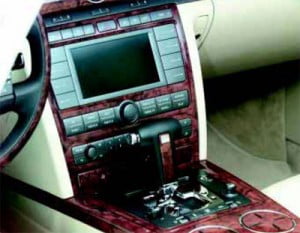
Система Infotainment. Передний пульт управления
Эта система реализует множество функций. Их можно задавать и отменять с клавиатуры на центральном (переднем) пульте управления и индикации, на рулевом колесе или на заднем пульте управления кондиционером Climatronic. Функции системы – AUDIO/TV — Пользование радиоприемником, проигрывателем компакт-дисков и телевизором. – PHONE — Телефонная связь. Мобильный телефон (Handy). Электронная записная книжка. – NAVI — Навигация. Проводка по маршруту. Информация о пункте назначения. – TRAFFIC — Телеметрия. Предупреждения о заторах. Альтернативные маршруты. – BOARD-PC — Контроль за режимом движения. Данные о расстояниях. Расход топлива. Пункты дозаправки. – AC — Микроклимат в салоне. Управление отопителем и кондиционером. Пользование гелиоактивным люком и автономным отопителем. – SETTINGS — Варианты настройки (на замену щеток, регулировку фар, на управление с голоса и др. сервисные функции). – VEHICLE — Контроль за давлением в шинах. Настройка ходовой части, регулирование дорожного просвета и жесткости амортизаторов.
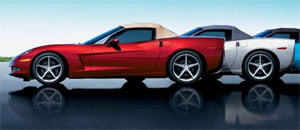
Система Infotainment. Основные компоненты: – Пульты управления (на передней панели, сзади и на рулевом колесе). – Дисплей (на приборном щитке). – Навигационный компьютер, дисковод CDROM и проигрыватель компакт-дисков (внутри вещевого ящика) – Антенны (в заднем стекле) Микрофон (в верхней передней консоли) для управления с голоса и для пользования телефоном.
Основные компоненты системы Infotainment соединены между собой информационной CAN-шиной. Кроме названной шины, бортовая компьютерная сеть содержит еще две, одна из которых обслуживает – трансмиссию, а другая – – сервисные устройства. Обмен информацией ведется по всем трем CAN-шинам. Поэтому для системы Infotainment доступны многие датчики и исполнительные устройства.
Т.к. вы неавторизованы на сайте. Войти.
Т.к. вы неавторизованы на сайте. Войти.
Т.к. вы неавторизованы на сайте. Войти.
Т.к. вы неавторизованы на сайте. Войти.
Т.к. вы неавторизованы на сайте. Войти.
Т.к. вы неавторизованы на сайте. Войти.
Т.к. вы неавторизованы на сайте. Войти.
Audi MMI
Like everything else about Audi’s cars, MMI is sharp and well designed. It features a rotary controller—always a plus—and a touchpad that can recognize handwriting in some models. What really sets MMI apart, however, is the available “Virtual Cockpit” display. It replaces the instrument cluster that can display everything from a digital speedometer to Google Maps satellite images. Apple CarPlay and Android Auto are available on most new Audi models.
More recently, with models like the Q8 and all-electric E-Tron, Audi adopted a dual-screen setup, with a lower screen taking the place of most analog controls. That could have been a disaster, but works quite well.
Infotainment: usability and functionality
How you’d prefer to operate your infotainment system is also worth thinking about.
Voice activation systems are something we’re all learning to live with – be it on your phone or your smart speaker – and they’re increasingly being used in cars, with varying degrees of success.
Basic versions aren’t much cop. They tend to only understand (and we use that word loosely) set commands – usually displayed on the infotainment in form of a numbered list – and they’re prompted by pressing a button.
The latest systems, like Mercedes MBUX, are much more sophisticated. They spark into life when you say a key phrase – “Hey Mercedes” in the case of MBUX. They’re not infallible, but they are reasonably reliable and there’s a lot to be said for not having to take your hands off the wheel when driving.
No infotainment screen relies solely on voice activation. Most will also be controllable using the centre touchscreen, but some manufacturers do the same using a controller between the front seats, via gesture commands, using tiny touch controls on the steering wheel or by using all of the above.
It’s also worth considering the menu layout. The best infotainment systems have a logical layout that makes them very intuitive, key features require the minimum number of button presses to use and they have ‘home’ buttons that make it easy to jump between menus.
What’s in a Name
You might be confused by the many names automakers use to
refer to their vehicle infotainment systems. Just know that this is a branding
move. In other words, they are each an infotainment system and largely do the
same things.
Fiat Chrysler calls its systems Uconnect. Ford has Sync,
while GM offers MyLink or Intellilink. Cadillac uses a different name, CUE. For
Toyota the system is called Entune. Mazda just uses the name Connect. BMW used
to call its infotainment systems iDrive but now uses the term BMW Cockpit.
The list goes on and on. Just realize that just because an
automaker has a fancy name for its infotainment system doesn’t mean it
necessarily is really that much more advanced. When you get down to brass
tacks, they all do pretty much the same things.
Сноски
- ^
- Демерс, Дэвид, «Словарь Mss Communication and Media Research: руководство для студентов, ученых и профессионалов», Marquette, 2005, p.143.
- Мерриам-Вебстер, Кембриджский онлайн-словарь
- Кембриджский онлайн-словарь
- «необычная форма стратегических внутренних коммуникаций» (infotainment.be) и исторически достоверная фактоид коллекции (how-infotaining.com)
- Андерсон, Бонни М., «News Flash», Wiley 2004, стр. 1, стр. 33.
- Кэмпбелл Р., Мартин Р. К. и Фабос Б. Г. СМИ и культура: введение в массовая коммуникация. Бедфорд / Сент-Мартинс, 2012 г.
- Кэмпбелл Р., Мартин Р. С. и Фабос Б. Г. СМИ и культура: введение в массовые коммуникации. Бедфорд / Сент-Мартинс, 2012 г.
-
Баркер-Бенфилд, Дж. Дж. (16 октября 1998 г.). . Издательство Оксфордского университета. п.. ISBN — через Интернет-архив.
информационно-развлекательные женщины-журналисты-Авто. -легковые автомобили.
- ^
- Райнеманн, К., Станьер, Дж., Шерр, С., и Легнанте, Г. (2012). Жесткие и мягкие новости: обзор концепций, операций и основных выводов. Журналистика, 13 (2), 221-239. DOI: 10.1177 / 1464884911427803
- ^
- Стуркен и Картрайт, 1980: стр. 435.
- Тауссиг, Т. М. Дьявол и товарный фетишизм в Южной Америке. Чапел-Хилл (Северная Каролина): Американский университет Северной Каролины Press, 1980.
- ^ Стуркен М. и Л. Картрайт. Практики поиска: введение в визуальную культуру. Нью-Йорк: Oxford University Press, Inc., 2009.
- Кэмпбелл Р., Мартин Р. С. и Фабос Б. Г. СМИ и культура: введение в массовые коммуникации. Бедфорд / Сент-Мартинс, 2012 г.
- Тауссиг, Т. М. Дьявол и товар. фетишизм В Южной Америке. Чапел-Хилл (Северная Каролина): Американский университет Северной Каролины Press, 1980
2/10 Best: Cadillac XT4 Infotainment System
The 2019 Cadillac XT4 is available in four unique trim levels: Luxury, Premium Luxury, and Sport. Regardless of which version tickles your fancy, you’ll get the same infotainment system. For Cadillac fans, the new 2019 Cadillac XT4’s system is an improvement from the previous version. It gets extra points for being quick and sharp looking. Its setup is dated and features unique metallic piano key buttons for climate control and other functions. However, the Cadillac XT4’s infotainment system is set too deep in the dash and is tilted up, bringing glare issues. It’s a complicated interface, and awkward icon access makes it difficult for non-tech owners to navigate through seamlessly.
Ford Sync
 Ford‘s 2021 F-150 full-size pickup runs Sync 4, the newest iteration of the automaker’s infotainment system. Ford
Ford‘s 2021 F-150 full-size pickup runs Sync 4, the newest iteration of the automaker’s infotainment system. Ford
Ford’s Sync infotainment system is second only to FCA’s Uconnect system for domestic automakers. It’s colorful, cheery, and mostly simple to use. The company has just begun rolling out its newest version, Sync 4, in select vehicles, so we will focus on the new system’s feature set.
Moving from Sync 3 to the next generation, Ford built in several connected services that offer a smartphone-like experience for maps, weather and traffic. The new setup also boosts accuracy and speed for voice commands, and Ford says the system will offer up a better integration with Apple CarPlay and Android Auto, which enables more options for voice commands and other services.
The next-generation Sync system will also have the ability to wirelessly connect to a smartphone via Wi-Fi to access Apple CarPlay or Android Auto. Like MBUX, Ford says that Sync 4 will learn the driver’s daily habits and deliver suggestions and shortcuts to make the day more convenient.
Critical features of car infotainment systems
Here are some of the most common technologies that are part of modern in-vehicle infotainment systems:
Head-up display (HUD)
A head-up display is a transparent display that shows data without requiring drivers to look away from the road (with the head positioned up and looking forward, instead of angled down). Advanced head-up displays increase safety by allowing users to see everything they need without getting their eyes off the road.
Touch screen
Car infotainment systems often include touch screens that are made of LCD (Liquid Crystal Display) or TFT (Thin Film Transistors) to display complex, dynamic graphics and provide optimal functionality to users. Infotainment systems generally come with displays that range from 2 to 12 inches, but you can also find ones that feature HD displays that are 20 inches wide and offer users a more sophisticated experience.
Smartphone pairing
Compatibility with Android Auto and Apple CarPlay
Android Auto and Apple CarPlay are two platforms that help users to integrate their smartphones with their car’s infotainment system. Android Auto supports apps from Google, such as Google Maps or Google Play Music through an Android-based smartphone. Apple CarPlay, on the other hand, supports iOS-based apps from the Apple App Store.
Multi-standard radio reception
Infotainment systems include AM and FM or DAB/DAB+ digital radio which manufacturers can adjust to automatic or manual tuning. Users can then scan available radio stations easily.
Multimedia support
Car infotainment systems use Bluetooth, HDMI cable, and USB to transfer audio and video content to display screens, headphones, and speakers. These solutions can easily display pictures and videos, and they support a broad range of audio formats.
Advanced vehicular functionalities
Car infotainment systems support features that help users make the most of their vehicles and improve safety. These features include parking assistance, climate control in the vehicle, daytime running lights (DRL) indicators, and voice assistants that control system functions.
Looking for Automotive Software Development Services?
Find out how can we help you!
click the button below AUTOMOTIVE SOFTWARE DEVELOPMENT SERVICES
For example, an advanced parking assistance system can offer users a video feed from the rear view camera, displayed on the system screen only when reverse gear is being used.
Jeep Gladiator

The Jeep deserves to be on this list because of many reasons. Firstly the 5-inch touchscreen and two USB ports give ease and functionality. Secondly, the Bluetooth, along with the Uconnect system, adds more benefits. The used cars for sale in Dubai have the Jeep Gladiator with a better infotainment system.
This is because they are on a higher level than the base trim. The higher level includes an 8.4-inch touchscreen, Android Auto, wireless speaker and navigation. The Bluetooth is waterproof and can be removed as well. Apple CarPlay, Alpine audio system and HD radio are available too.
Recommended for you: 10 Best Cars to Buy in UAE Today
Why do infotainment systems all have different names?
While the functionality of most infotainment systems is similar, each car brand generally has their own name for theirs. Audi refers to its infotainment system as MMI (Multi Media Interface) whereas Ford uses the name SYNC. You’ll find iDrive in a BMW, while Mercedes-Benz has introduced the latest version of its MBUX (Mercedes-Benz User Experience).
In reality, what these systems can do is very similar. There are differences in the way you use them, with some using only a touchscreen and others using a combination of a screen linked to a rotary dial, buttons or a controller that’s similar to the mouse you use with your laptop. Some even use ‘gesture control’ which allows you to change settings simply by waving your hand in front of the screen. In each case, the infotainment system is the key interface between you and your car and which one is best is largely a matter of personal taste.
Can I add an infotainment system to my car?
The level of technology available as standard equipment in most modern cars looks like the stuff of science fiction. Automakers, like Toyota, have sunk major research and development funds into its cars, trucks and SUVs to make them as technologically-advanced as possible. Sure, things like GPS navigation and the ability to find points-of-interest for drivers are pretty standard these days. But what about people that are hanging on to an older model or are considering buying something from the pre-owned inventory available at White River Toyota? These customers need not be left behind the curve in the automotive technology revolution. There are all kinds of ways to add an infotainment system to a car. We’ve identified some of our favorites.
READ MORE: Toyota showing off new crossover SUV concept
Aftermarket heads-up displays
Just about every study that has ever been done about distracted driving comes to one common conclusion, drivers taking their eyes off of the road is the root cause of most accidents. The Navdy heads-up display system allows drivers to get all of the most important information they need right in front of them.
Why it’s great: Navdy uses a small unit that sits on the dashboard in front of the driver and can display navigation, phone calls and a whole host of other information. The driver never has to take his or her eyes off of the road and can control almost everything with intuitive voice commands.
Apps for avoiding traffic
Believe it or not, the most powerful piece of infotainment equipment is your smartphone. Several companies have developed applications that will help you stay ahead of traffic jams, construction delays or other impediments to your destination.
Waze
(Available for Android/iOs)
The great thing about Waze is that it uses all of its users to get a clear traffic picture. Before you leave, you can check the app and see what other people who are ahead of you are seeing. Once the app has collected all of its information, it can help you find a new route that will get you to where you’re going as quickly as possible.
Google Maps
Is there anything Google can’t do? When it comes to navigation, apparently not. What makes Google Maps so effective at providing accurate navigation and traffic information is the sheer volume of information it is able to collect. It can provide on-the-fly updates to changing conditions and will continuously offer alternative routes as needed.
White River Toyota has a very diverse inventory of new and pre-owned vehicles. If you’d like to see what we have in stock, stop by the showroom today.
What are your options?
All of which begs some crucial questions. For starters, who makes the best in-car infotainment systems today? What are the key trends for the future and is it even realistic for every car manufacturer to produce its own bespoke infotainment platform?
When BMW first introduced the iDrive interface, it was dismissed as impenetrably complex and unfathomable to use. But that hasn’t stopped several other car manufacturers from developing similar systems.
Mercedes’ COMAND and Audi’s MMI systems also use a rotary wheel-come-joystick controller for navigating menus and inputting data. It’s a much more intuitive and effective control interface than the more Luddite members of the mainstream motoring press would have you believe.
BMW iDrive

This is perhaps the limelight of the infotainment world. Simple tasks like changing the volume, turning on the radio and taking phone calls is a breeze due to the gesture recognition. The options on the menu are clearly visible, and the touchscreen functionality is a perk as well.
Apart from this, the hard preset buttons of the car are unique in their own way. They can save useful information like navigation destinations and frequently visited radio stations. This feature saves a lot of time and is convenient. Another tool of click-wheel controllers is now considered common in BMW, which shows how much the car has improved the infotainment system from the early days.
Коммодификация
Трансляция важных или интересных событий изначально предназначалась просто для информирования общества о местных или международных событиях для их собственной безопасности и осведомленности. Однако местные новостные агентства все чаще используют местные события, чтобы спровоцировать щекотка и развлечения у зрителей. Коммодификация известен как процесс, с помощью которого материальные объекты превращаются в товарный товары, имеющие денежную (меновую) стоимость
Основные качества людей и их продуктов превращаются в товары, в вещи для покупки и продажи на рынке, так же, как занимательные рассказы продаются, чтобы привлечь внимание зрителей
Товарный фетишизм — это процесс, посредством которого товары лишаются смысла их производства (труда, который их произвел, и контекста, в котором они были произведены) и вместо этого наполняются абстрактным смыслом (обычно через ). В худшем случае жажда СМИ рассказывать и продавать истории заставляет их не только задокументировать трагедию, но и искажать или использовать ее. Как часто можно увидеть в новостях (с рассказами о крайнем ожирении или необычных деформациях), современные «информационно-развлекательные программы» превращают людей в товар через их личные трагедии или скандалы, развлекая и возбуждая публику.
What Is Android Auto?
Android Auto works with any smartphone that uses version 5.0 or later of the Android ‘Lollipop’ operating system (for the best performance, version 6.0 or later, known as ‘Marshmallow’, is recommended). Among the many compatible Android phones are those from Samsung, LG, HTC, and of course Google’s own Nexus and Pixel phones.
Like CarPlay, Android Auto presents the user with a version of their phone’s menu systems and operating functions, so rather than Apple Maps, the phone’s satnav is powered by Google Maps, and instead of Apple Music, you get Google Play Music. You can control Android Auto either via the car’s touchscreen or by using voice recognition, even asking it to set reminders for you for later in the day.
The range of downloadable apps for Android Auto again includes Spotify, as well as Skype, WhatsApp, Amazon Music, and Audio Books.Click here to find out more about Android Auto
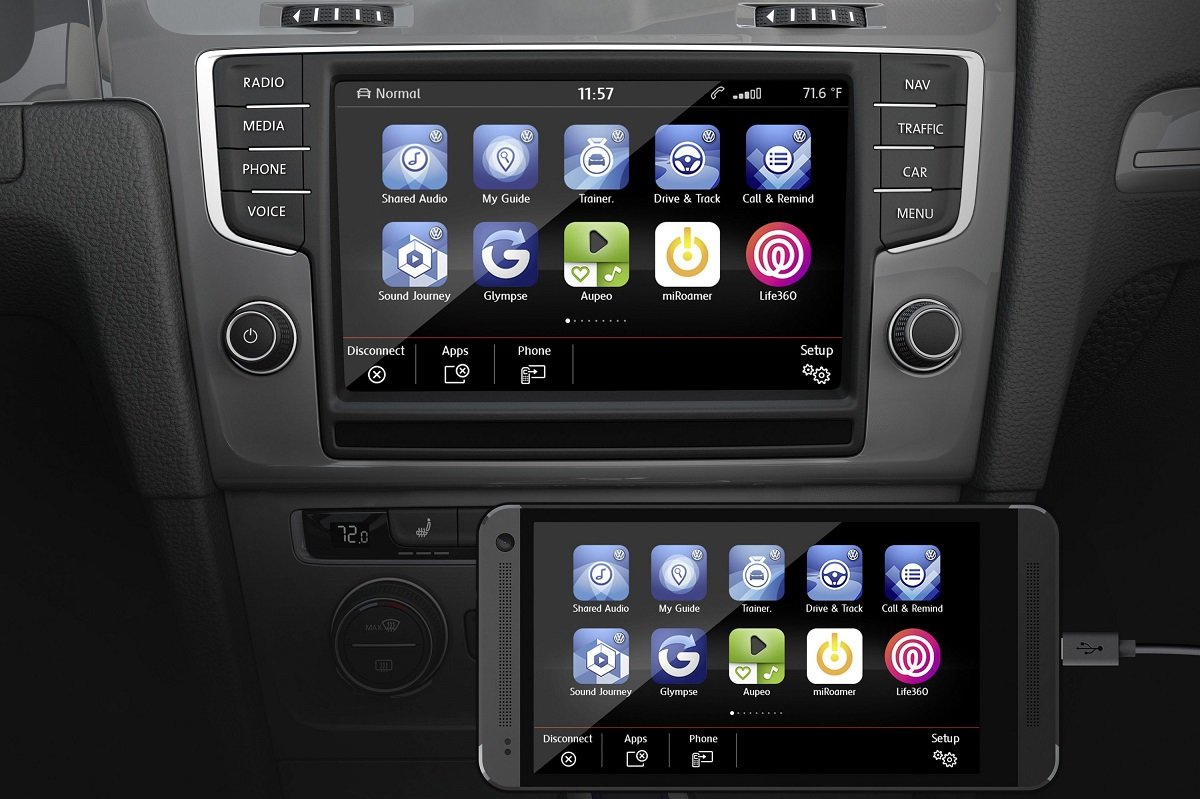
What to Consider when Choosing an Infotainment System
Before you get too excited about the particular features of an infotainment system, there are a few basic considerations that could make or break your user experience. First, driver distraction is a very real risk when it comes to in-car entertainment systems. Make sure the user interface layout is logical and the icons on the screen are large enough to easily press when you’re driving. It’s all very well having a giant music library at your fingertips, but not if those fingertips keep jabbing at the Spice Girls by mistake.
Next, remember that not all car-maker’s touchscreens are equal. Some systems react purely to pressure from a finger, while more advanced setups feature capacitive touchscreens, which use electrodes to react to your fingers. This allows more functions, like swiping or pinching, as you’d do on a smartphone or iPad.
We also recommend looking for a car with a system that combines touchscreen functionality with some physical buttons. For example, knobs that you can twist to control audio volume and zoom in and out of a map tend to be easier to use than swipe or pinch functions, and having a few shortcut buttons on the dash and steering wheel makes it simple to change radio stations or jump between popular features such as radio and Bluetooth.
Having a secondary controller located near the gear-lever can also make it easier to operate a car’s infotainment features while driving. A rotary controller such as that used for BMW iDrive or some Mazda systems tends to be easier to operate than the touchpad that Lexus favours for its cars.
Be wary of touchscreens that also house the controls for the car’s heating and air-conditioning (for example, Volvo or Tesla). They can be fiddly to use, and if the electronics pack up, you might have no control over the temperature inside the car.
Next, check for any lag with the system’s processors that occurs between pressing the buttons and the system responding. A good way to do this is to enter an address on the satellite navigation – ideally there should be no pause while the next letter loads.
Alternatively, consider a vehicle with a hands-free voice control system. These have been around in various forms for some years now, and it’s certainly true that not all voice assistants are equal. Older systems in particular will be nothing like as effective as voice command via something like Siri on Apple’s ios operating system. However, if you’re buying a new car you might have better luck; for example, the MBUX system from Mercedes-Benz or BMW’s latest Intelligent Personal Assistant feature natural language processing to learn your speech patterns over time. Some systems also give access to third-party voice control features like Amazon Alexa or Google Assistant; again these can be worth looking out for if voice control is a desirable feature.
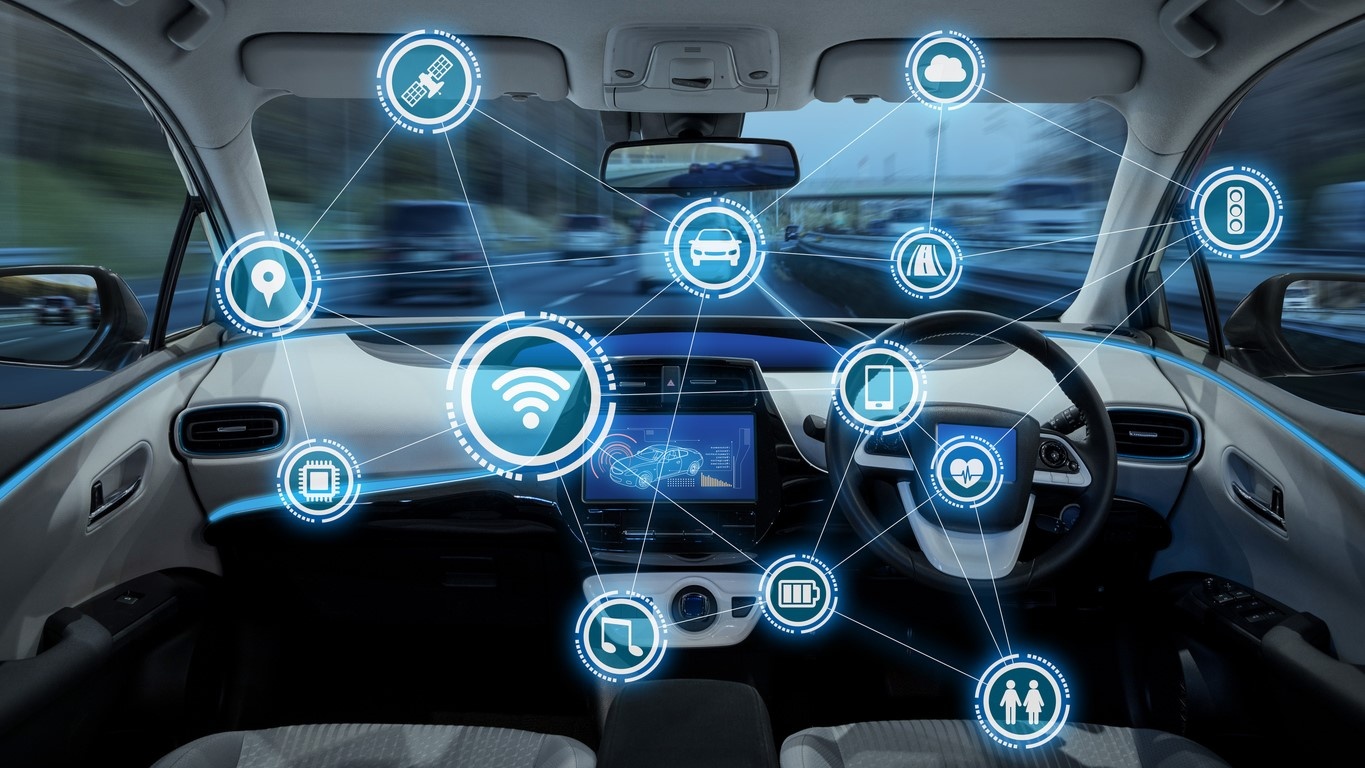
Hyundai
Инфотейнмент-систему BlueLink корейский бренд запустил в 2012, она также известна как Genesis Connected Services.

Возможно, это не самый продвинутый и передовой продукт на рынке, но зато там доведены до совершенства основы.
Быстрые процессоры, разумно устроенное меню и достаточное количество обычных, аналоговых ручек управления на всякий случай.
На большинство «Хендай» в стандартных комплектациях ставят небольшой экран, который ничего особенного из себя не представляет.
Дисплеи побольше предлагают отличное разрешение. Есть совместимость с Apple CarPlay/Android Auto/Amazon Alexa.

